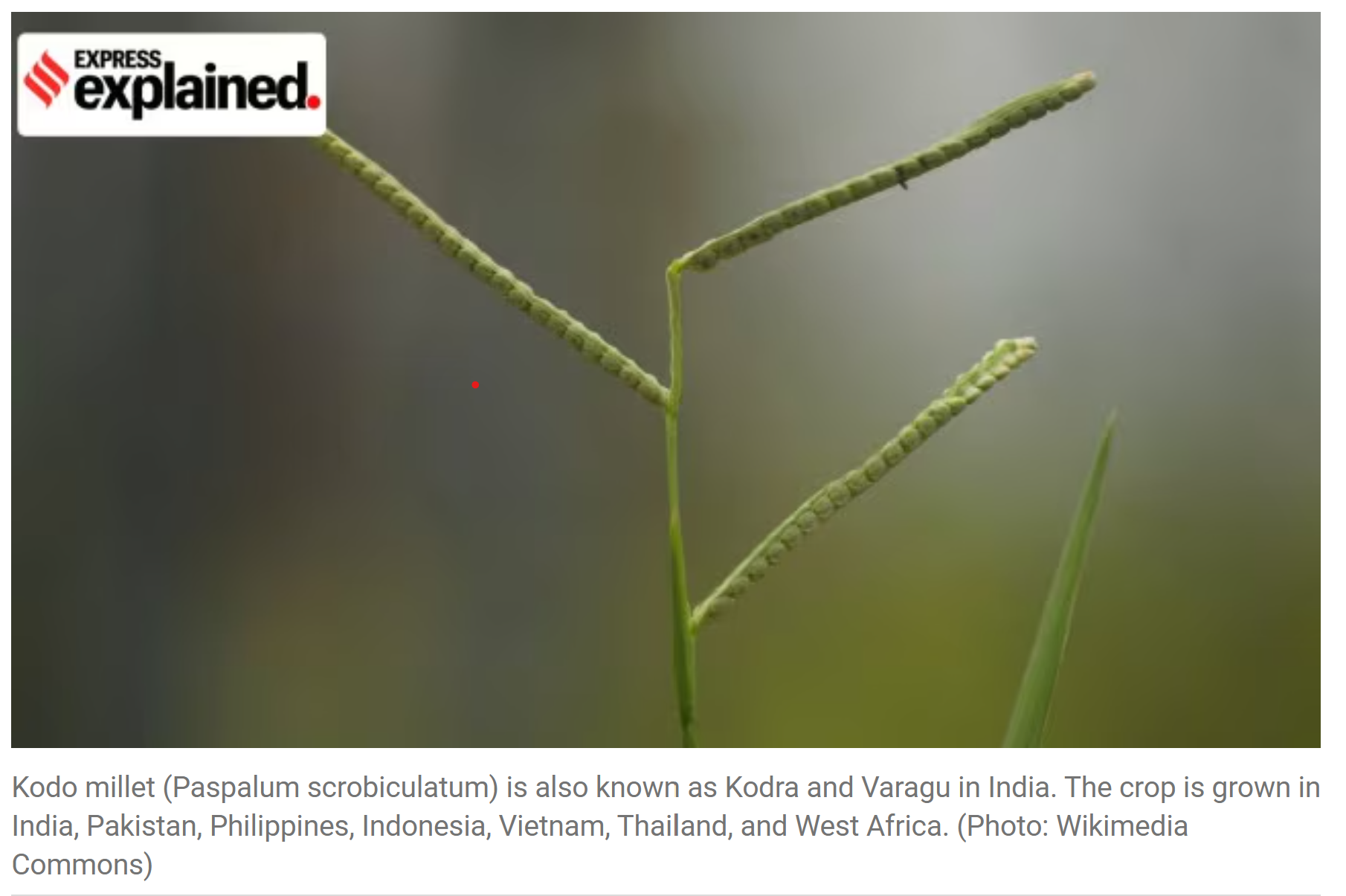Kodo Millet

- 03 Nov 2024
In News:
Kodo millet is a staple food for many tribal and economically weaker sections in India. It is one of the 'hardiest crops, drought tolerant with high yield potential and excellent storage properties,' according to researchers
Background on Kodo Millet:
- Kodo millet (Paspalum scrobiculatum), also known as Kodra or Varagu, is a hardy, drought-tolerant crop widely grown in India, especially in Madhya Pradesh.
- It is a staple food for many tribal and economically weaker sections of India and is used to make various dishes like idli, dosa, and rotis.
- Kodo millet is valued for its high yield, nutritional benefits (rich in vitamins, minerals, antioxidants), and storage properties.
Incident in Bandhavgarh Tiger Reserve:
- 10 elephants from a herd of 13 died over three days in Madhya Pradesh’s Bandhavgarh Tiger Reserve.
- The cause of death was suspected to be mycotoxins associated with kodo millet, particularly Cyclopiazonic Acid (CPA), which is toxic to animals.
Historical Cases of Kodo Poisoning:
- The first human cases of kodo poisoning were reported in 1922 in the Indian Medical Gazette.
- Animals, including elephants, have also been affected by kodo millet consumption, with documented deaths as early as 1983.
- Cyclopiazonic Acid (CPA), a mycotoxin, was identified as the cause of kodo poisoning in the 1980s.
Why Does Kodo Millet Become Poisonous?
- Kodo millet is grown in dry and semi-arid regions and is vulnerable to fungal infections, particularly Ergot fungus, which produces CPA.
- When the crop encounters rainfall during maturing and harvesting, fungal infection can lead to "poisoned kodo," known locally as 'Matawna Kodoo' or 'Matona Kodo'.
- The mycotoxins in the infected millet are stable and resistant to standard food processing techniques.
Impact of Mycotoxins on Animals:
- Symptoms of poisoning: Vomiting, giddiness, unconsciousness, rapid pulse, cold extremities, limb tremors.
- Nervous and cardiovascular systems are primarily affected, causing liver dysfunction, heart damage, and gastrointestinal issues.
- In severe cases, consumption of infected kodo millet can cause death due to cardiovascular collapse and organ failure.
- Similar symptoms of depression and loss of mobility were observed in animal studies, including in mice.
Solution to Kodo Toxicity:
- Biocontrol agents (organisms that fight harmful pathogens) can help reduce fungal growth and mycotoxin production in kodo millet.
- Good agricultural practices: Sorting, proper storage in airtight containers, and avoiding moisture exposure during threshing can minimize contamination.
- Post-harvest management: Removing infected grains is crucial to preventing the spread of the disease.
Detection of Mycotoxins in Kodo Millet:
- Challenges: Mycotoxins are often undetectable by sight, and traditional methods like chromatography are time-consuming.
- Rapid detection tools: Enzyme-linked immunosorbent assays (ELISA), lateral flow assays (LFAs), and biosensors offer faster, on-site methods for detecting mycotoxins in kodo millet.
